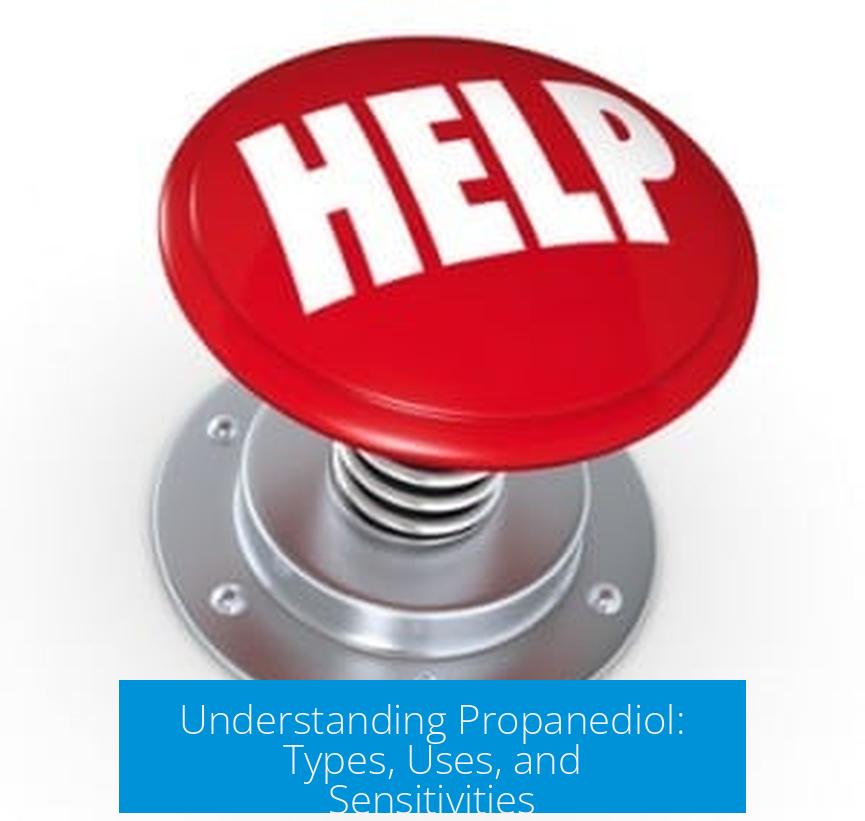Understanding Propanediol: Types, Uses, and Sensitivities

Propanediol refers mainly to two types of isomers: 1,2-propanediol and 1,3-propanediol. In most contexts, especially cosmetics, “propanediol” typically means the 1,3 isomer.
Types of Propanediol
There are two primary isomers of propanediol:
- 1,2-Propanediol: Commonly known as propylene glycol, widely used in food, pharmaceuticals, and cosmetics.
- 1,3-Propanediol: Usually labeled simply as “propanediol” in ingredient lists. This form is prevalent in cosmetics and personal care products with the INCI name “propanediol.”
Understanding the isomer difference is important. While their chemical formulas are similar, their functions and safety profiles differ slightly.
Sensitivities and Allergic Reactions
Some individuals experience allergic reactions or sensitivities to propanediol. This includes skin conditions like eczema and contact dermatitis, as well as respiratory issues.
Though propanediol has humectant properties, drawing moisture to the skin, it can sometimes impair the skin barrier, especially in sensitive people. Still, only a small percentage of users show such reactions, and sensitivity may vary between the 1,2 and 1,3 forms.
General Advice for Sensitive Users
- People with severe allergies or skin conditions might consider avoiding both propanediol isomers.
- Patch testing new products is advisable for those with known sensitivities to glycols or humectants.
- Consulting with a dermatologist can help manage reactions and identify safe alternatives.
Summary of Key Points
- “Propanediol” usually refers to 1,3-propanediol in cosmetics, not 1,2-propanediol (propylene glycol).
- Both isomers serve as solvents and humectants but differ in usage and allergenic potential.
- Sensitivity and allergic reactions to propanediol exist but affect only a minority.
- Severe reactions warrant avoidance and medical advice.
What is the difference between 1,2-propanediol and 1,3-propanediol?
1,2-propanediol is commonly called propylene glycol. When you see “propanediol” without further detail, it often means 1,3-propanediol. The 1,3 isomer is the one used in cosmetics.
Which form of propanediol is used in cosmetic products?
Cosmetics use the INCI-named “propanediol,” which refers to 1,3-propanediol. This means products often contain the 1,3 isomer, not 1,2-propanediol (propylene glycol).
Can propanediol cause skin irritation or allergies?
Some people are sensitive to propanediol and may develop eczema, dermatitis, or breathing issues. The risk depends on individual sensitivity and reaction severity.
How does propanediol affect the skin barrier?
Propanediol acts as a humectant, which can sometimes damage the skin barrier. However, only a small percentage of users experience this issue.
Should I avoid propanediol if I have sensitive skin?
If you have severe reactions or allergies, avoiding propanediol might be safer. Mild or no reactions mean it might still be suitable, but caution is recommended.





Leave a Comment